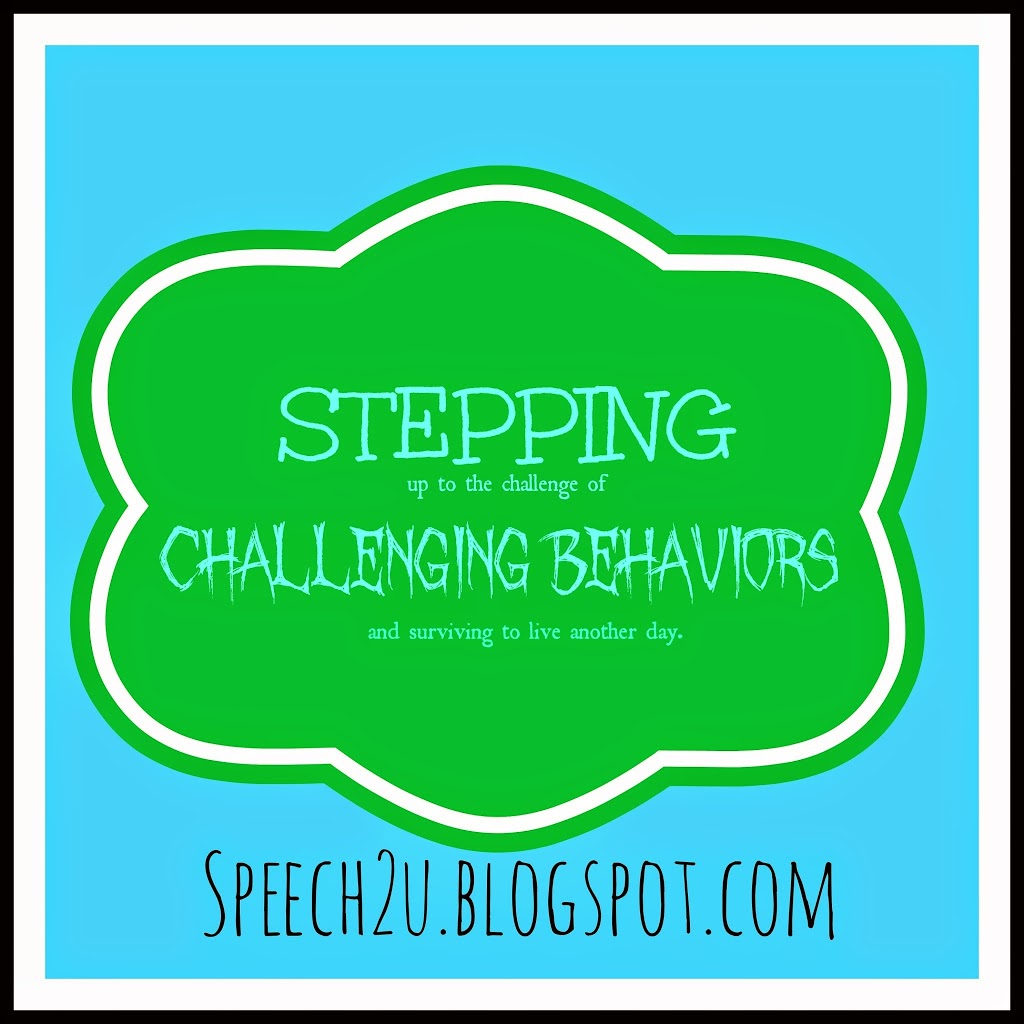I would say at least 50% or more of my caseload has exhibited challenging behaviors for the last 16 years that I’ve been practicing. Hitting, throwing, spitting, biting, work refusals, crying, refusing to leave etc. Today I’m going to talk mostly about individual sessions. At school settings when I have one student who is more difficult, I use different strategies. When I can, I try to set up individual sessions with them to start and then work them back up to a group.
When I have a child that is not complying in therapy, I ALWAYS start by looking at their activities. Is the activity the just right challenge for the child? Have I used motivating materials to engage them? Have I explained what the expectations in a way that they understand? Have I established rapport with them? I find that taking the time to gain their trust makes a huge difference in how I can manage their behaviors. I’ve talked before about therapists who say “THEY need to change-or not everything is fun or THEY need to learn how to do this work because they are in 4th grade.” I don’t disagree that they need to learn how to follow the rules to be successful in society. But I don’t know that I’ve ever seen a case where the therapist has just put their foot down-and the kid has started complying and learning. Here are a few tips:
We statements: I encourage my clients to think of us as a “group.” We can work on this today. We are friends. Friends like to say nice things to each other.
Use humor: For some children, I can diffuse a situation much more quickly by using humor than insisting that they make restitution (example, stopping therapy until a child to pick up the materials after they have thrown them.) Once they are calm, we go back to clean up. But if they are agitated, it’s not a good time to try to get them to comply with anything. (and it’s wasting valuable therapy time.)
Use “You can” vs. “Will you” statements. I learned this technique in Toomey’s SOS feeding course. It’s really hard to remember. But it’s helpful not to ask something that’s not a choice.
Offer choices whenever possible.
Utilize schedules and duration maps to give information about what they need to do and how long they need to do it. (Check back later this week for some more information on schedules and maps!)
Offer empathy. Instead of setting behavioral expectations when a child is getting aggressive, try giving them the words to express how they feel. “You feel mad. Your face is red and your fists are clenched. You really wanted to win that game. It is no fun to lose games.” Once the student is calm-probably on a different day, revisit the situation using social role plays or social autopsies.
Be Proactive. Focus your energy on stopping the behaviors before they start vs. giving consequences to the behaviors. Have you ever had an eye opening moment in therapy? I posted this story last year but wanted to share it again because I found it to be so helpful to me.
About a week before my wedding, he bolted out the front door of the clinic in to a busy parking lot. I ran after him SO worried that he would be injured or hit by a car. He ended up falling on the sidewalk. My adrenaline was so high that I couldn’t stop. I JUMPED over him, lost my balance and face planted on the asphalt. I scraped my face up and one side of my body. I made that horrible noise when all of the air leaves your body at once. It was so loud that the front desk staff came running out. It probably sounded like I had gotten hit by a car. A woman in a walker was leaving from a physical therapy appointment and said, “Oh my goodness, are you okay?” My little runner was getting up at this time. “GET HIM!” I croaked out, lying on the ground. When you start asking people in walkers to corral your clients, you know you need to start thinking about some new techniques. The story ended “happily.” I was able to get my client, most of the scrapes and bruises had disappeared before my wedding. And my coworkers were not that upset by my hysterical crying that day.
I understood the functions of behaviors-or I thought I did. I made up plans, had consistent consequences, avoided (with the exception of my running leap) excessive attention to the behavior. I spoke with the family, consulted with occupational therapy and suggested a behavior therapist. There was a 6-12 month wait to see a behavior therapist. I watched Super nanny episodes. I made sure that consequences were clear at the beginning of the session so there were no surprises. I had sticker charts and schedules at the ready. The behavior didn’t change.
Every time we would walk back to a therapy room, he would run to the kitchen to get a snack. I’d say, “No.” and we’d end up in a time out. I’d have to carry him back to the room kicking, screaming, and pinching. We didn’t get much speech therapy done.
Then one day, as we were walking down the hallway, I stopped right before he usually ran away. I looked at him and said, “Tell me I want snack.” He did. We went to the kitchen, got a snack and then went to the therapy room and had a fantastic session.
For him, I needed to provide an alternative COMMUNICATION behavior prior to his maladaptive behavior. The consequences weren’t working for me because it wasn’t helping him to get his needs
met.
Here are a couple of things I learned that day:
1. Preventing a behavior rather than providing consequences works really well when you only have 30-60 minutes to work with a child.
2. Constantly repeating strategies that aren’t working is a useless exercises. The strategies need to change.
3. As the adult, I’m the one that has to change my behavior in order for the child to adjust theirs.
4. I’d still refer to a behavior therapist any time I can. They are the experts in this



